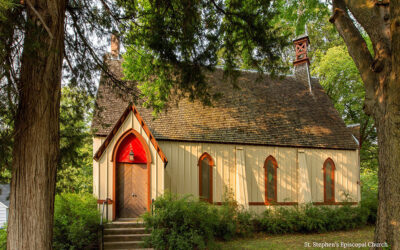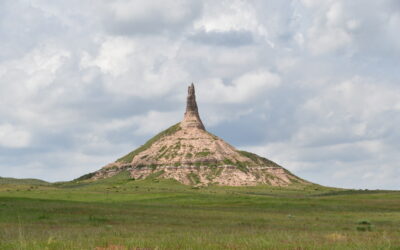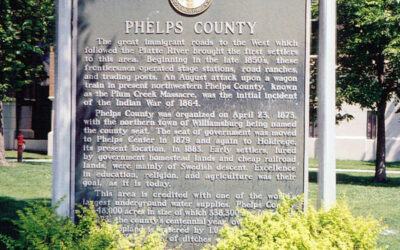Reminiscences about pioneer life frequently describe droughts, blizzards, and grasshopper infestations. Job E. Green recalled a more personal event when he wrote his memoirs in 1922. In 1872 he and his wife homesteaded near the future site of Albion in Boone County, Nebraska. Green wrote,
“Along in April I set about building our ‘little sod log shanty on the claim.’ This was to be 16×20. I went over on the Cedar [Creek] to get my ridge poles, three of them. With the sod walls laid, the ridge poles well bedded, rafters on, brush and hay next, we were ready for the sod roof. This was of matched sod with joints well packed with clay. It was a dandy and never leaked a drop the first year. Then I shaved the walls smooth and put on a plaster of clay and ashes. We had a door in the east side with a half window in it, a half window in the south end and a full window in the west side, of 8×10 glass, dirt floor, but had two planks along side the bed to stand on. This was a nice city bed and prized very highly by the owner. Every cent in cash that was put in this house was $10. Into this we moved in June 1872. No millionaire was ever happier than we were.
“It can’t always be bliss, so the scene changes a little. Spring comes once more and so did the rain. Last year our roof was perfect, but now it sprung a leak. I put more dirt on but still it leaked. More dirt and more leak. The deluge came one night and the flood poured through. The floor was muddy. The water soaked-yes, soaked and ran clear through that nice bed and Mrs. Green sat on it and lifted up her voice and wept all night through and mingled her tears with the flood of waters. The next day after the flood I took my oil soaked horse blankets and pitched them . . . over the bed so that it never got wet again. Then as soon as I could the next year I got boards and made a roof over the sod one. That sod roof was 20 inches thick, but it leaked just the same.”



